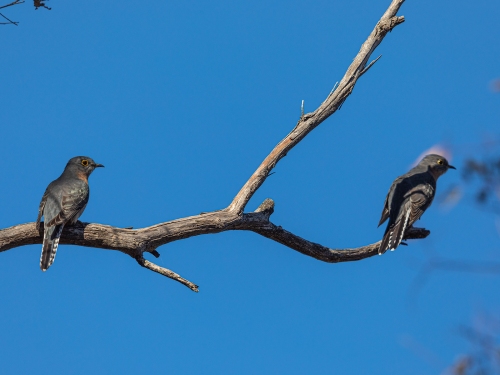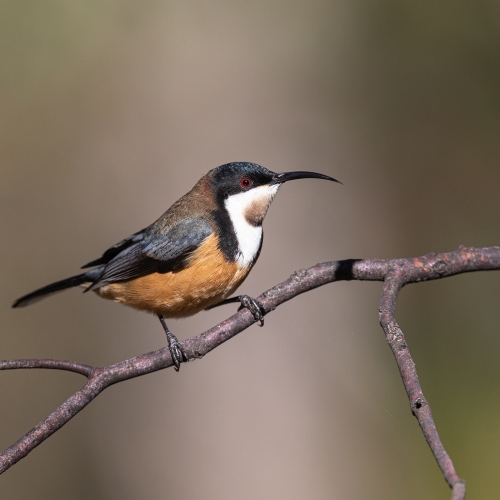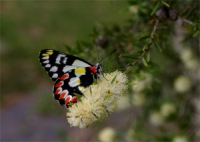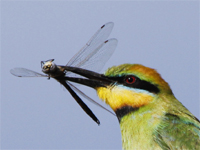I was pleasantly surprised last weekend to encounter two Fan-tailed Cuckoos in the Muckleford Nature Conservation Reserve. I had excellent view of the first bird after it flew to a nearby branch, where it was joined almost immediately by a second individual.
Both birds were silent and moved on after a few minutes perched in the early morning sunshine. I did hear a brief ‘fan-tail’ trill at a distance a few minutes later.
Fan-tailed Cuckoos are regarded, quite rightly, as late winter migrants to the box-ironbark country. The story is a bit more complicated as they can be seen in any month, although it is unclear if some individuals remain all-year round or if these might be birds from further south. Their silence outside the breeding season is why they largely go unnoticed, until their distinctive calls are heard again from August onwards.
The story with Eastern Spinebills has some parallels, but in reverse. Arriving in good numbers in the autumn they disappear to the high country to breed in late winter, although they are apparently resident in nearby locations such as Maldon and Yandoit. The movement patterns of Australian birds are complex and new insights are continually emerging. Seasonal conditions also play a significant role in what happens from year to year, even for species with fairly well-established movement patterns.

Fan-tailed Cuckoo, Muckleford Nature Conservation Reserve, 29th May 2021

II

III

Eastern Spinebill (male)

II

III

Grey-shrike Thrush, Mia Mia Track











Love your photos as always Geoff, they are continually of the highest quality. Also very much enjoy your posts that include a few snippets of relevant info, very enlightening, thank you.